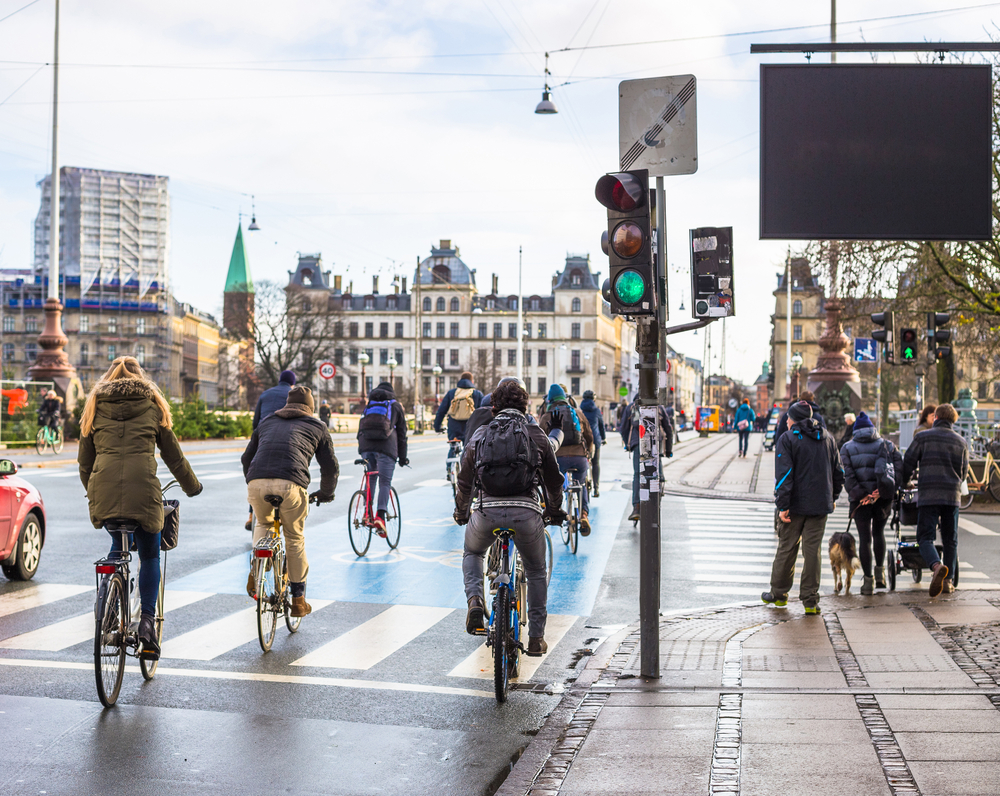There are tons of reasons to want to ditch your car for good, from saving money on fuel, insurance, and parking fees, to cutting your carbon footprint and helping create a healthier community.
While owning a car may seem like a basic necessity no matter where you live, the truth is that there are many cities around the world where you’re actually better off without a vehicle. This is due to a variety of factors like traffic, public transportation options, bike lanes, walking trails, and top-notch metro systems.
No city is created equally, and if you’re looking to settle down in a place that doesn’t require you to own a vehicle, keep reading to discover the 30 best cities in the world to live without a car.
Table of Contents
1. New York, New York, USA

New York City is one of the best cities in the world to live without a car thanks to its pedestrian-friendly paths, extensive bike trails, and its comprehensive public transportation system.
You can forget needing four wheels while in NYC, and although the city is massive, there are tons of smaller neighborhoods that are actually best traversed on foot. Some of the Big Apple’s most walkable districts include Bowery, Little Italy, and the Flatiron District.
Of course, you won’t be able to see even a fraction of this city on foot alone, but luckily there are over 1,000 miles of bike lanes as well. Even if you don’t own your own bicycle, you’ll find bike rentals around town thanks to ride-sharing companies like Citi Bike. You can choose from single ride options, day passes, or even annual memberships.
For those who need to go longer distances, New York has extensive subway and commuter rail systems and the country’s largest bus fleet. The transportation system may seem a bit daunting to newcomers, but you’ll be commuting like a native once you master your NYC geography.
2. London, England
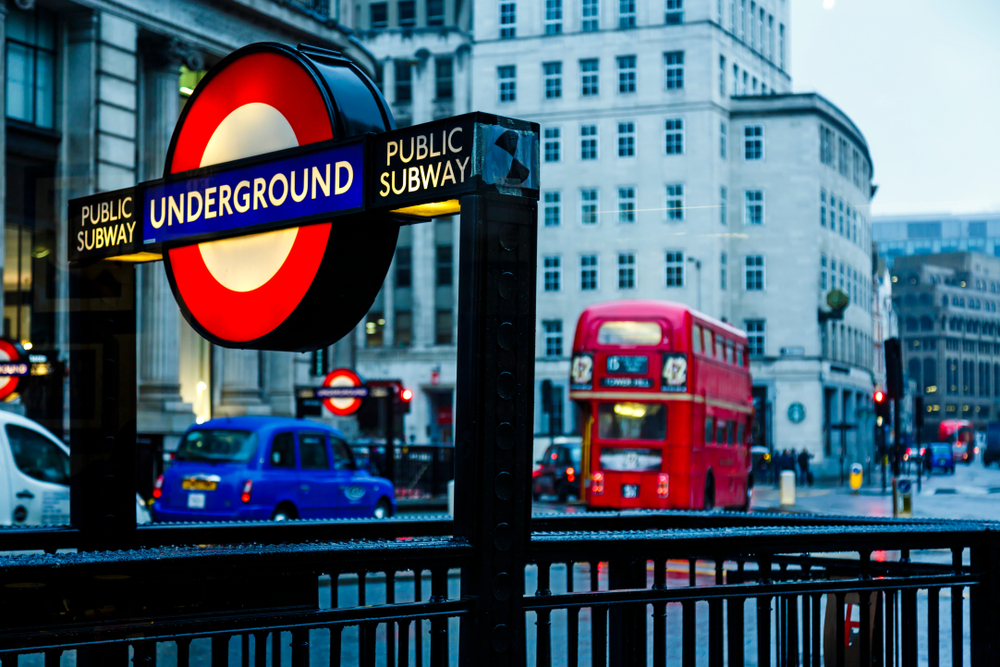
London is another city that is great for living car-free, and like many other large cities, you are likely better off without a vehicle. Gas prices are high, traffic jams are common, residential streets are narrow, and parking can be a real nightmare. There are tons of options for getting around this capital city without a car, most of which are cheaper and easier.
Famous for its “tube”, London’s underground railway network is one of the most comprehensive in the whole world. Buses are also a great way to get around central London and are sometimes a cheaper option than the subway.
If you’re looking for an even cheaper mode of transport, London is also full of walking and biking trails. If you do find yourself in need of a car, you can always hail a taxi or rent a car for a day or two.
London is constantly evolving, and as time goes on, infrastructure is becoming better equipped for pedestrians than it is for car owners.
3. Tokyo, Japan
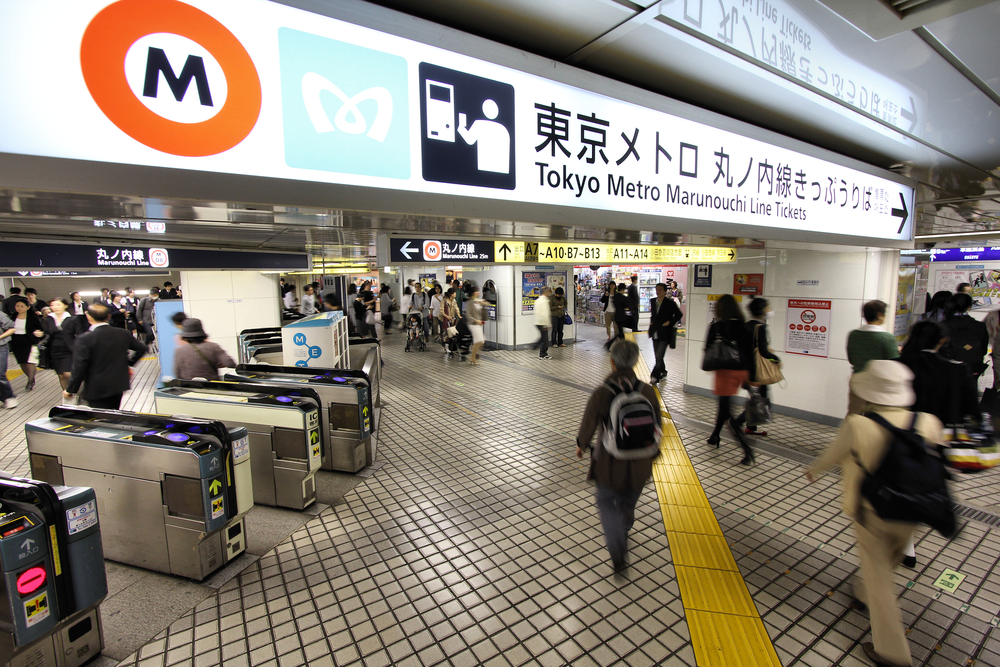
Known for having one of the best train systems in the world, Japan is an obvious choice for those looking for the best place to live without a car. Tokyo is one of the best cities in the country for those without a vehicle, and if you’ve ever spent any time here stuck in traffic, you’ll likely be selling your set of wheels as soon as possible.
Tokyo’s train and subway system is one of the best options for getting around the city, and you’ll find tons of different options for getting from point A to point B including local, express, rapid, and other types of trains. Buses are another popular mode of transportation in Tokyo, and this is a great way to get somewhere if it’s not located near a train station.
Walking is perhaps one of the best ways to see the city, and while it’s not a viable option for traveling long distances, it is a great way to explore smaller areas.
4. San Francisco, California, USA

There’s no need for a car in the city of San Francisco, and like many other large cities around the world, you may actually find yourself preferring a car-free lifestyle in this vibrant city. San Francisco is one of the most walkable cities in the United States, though you may find yourself out of breath at times due to the iconic, hilly layout of the city.
Just like New York City, certain neighborhoods are easier to peruse by foot than others. Some of the most walkable districts in San Francisco include Downtown-Union Square, Chinatown, and Tenderloin.
If you are traveling a longer distance than your own two feet can take you, you can hitch a ride on a historic cable car, a fuel-efficient Muni bus, or the light rail metro train. For longer distances, the Bay Area Rapid Transit (also known as the BART) can even take you to areas outside of the city.
San Francisco is extremely bike-friendly, with tons of safe paths for riders. If you don’t have your own bicycle, you’ll find dockless e-scooters and bikes to rent around the city.
5. Copenhagen, Denmark
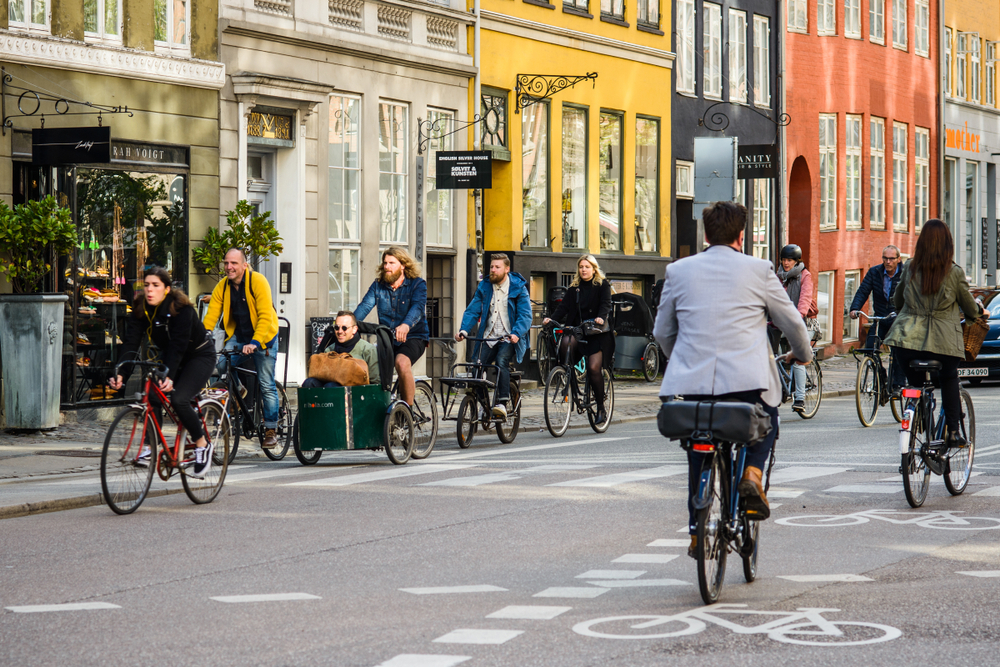
Copenhagen is one of the best cities in the world to live without a car, and this city actually boasts the largest car-free area in all of Europe. This makes it exceedingly easy for pedestrians to get from point A to point B by walking, but the favorite mode of transportation in Denmark’s capital is easily the bicycle.
Over half of the city’s full-time residents bike to work, and it’s not hard to see why. Copenhagen is outfitted with over 320 km (about 200 miles) of bike routes, and the city has plans in place to increase routes to the suburbs in the next few years.
Even if you’re not a fan of biking, Copenhagen is extremely easy to navigate without a car. Their rail system is simple yet comprehensive, with four main lines connecting you to every neighborhood in the city. There are also plenty of buses to take you wherever you need to go, along with a larger train system for easy access to the suburbs that are further away.
6. Malmo, Sweden

Scandinavia in general is a great place to live without a car, and like Copenhagen, Sweden’s southern city of Malmo is a mecca for cyclists. Malmo is constantly ranked as one of the most bike-friendly cities in the world, and it’s third only to Copenhagen and Amsterdam in terms of bike traffic.
The city is almost completely flat, which makes cycling all the more appealing, though you will have to have your own bike as there is no widespread city hire option available (yet). There are scooters galore, however, and in the summer months, you’ll find them on virtually every street corner.
There is also a comprehensive bus system in Malmo, with both intercity and longer distance routes available. Just be sure you have a ticket if you plan on taking a bus, as surprise ticket inspections are not uncommon (and you’ll have a pricey fee if you’re caught without having paid your fare).
Malmo is a great place to walk around, especially if you’re in the city center. The city is quite spread out, however, so you will likely need to take a bus or find a bike to be able to access all of it.
7. Seattle, Washington, USA
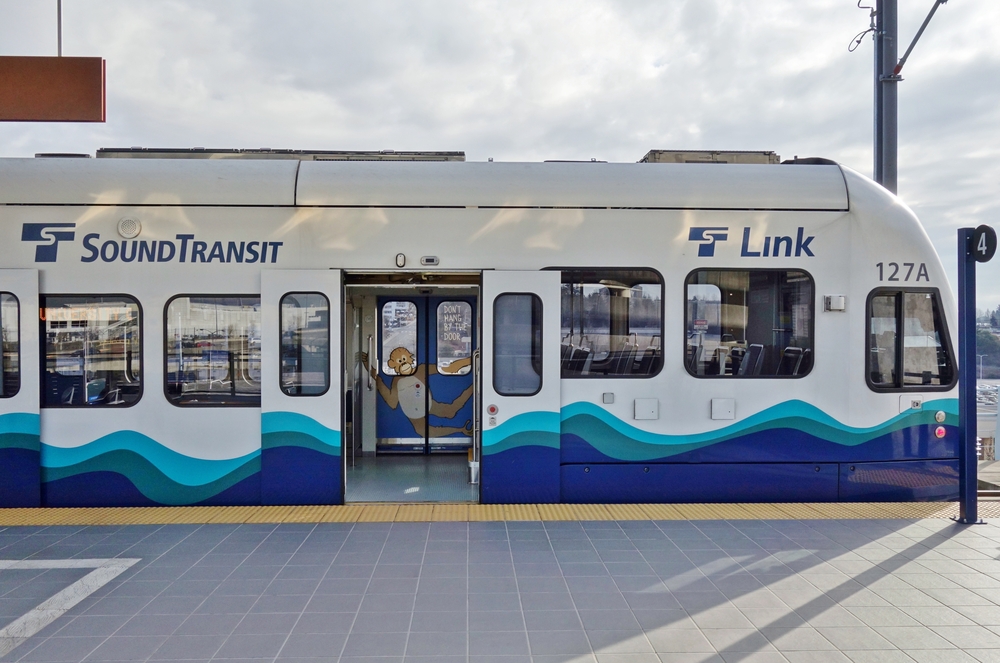
Seattle is a massive city, and at first glance, it may seem impossible to live here without a vehicle. But this is actually one of the best cities in the world to live without a car, and its public transportation systems are some of the best in the entire country.
The inter-city is best accessed by the bus and streetcar system, and those traveling long distances can get to where they’re going via the Sound Transit and the Link light rail system. Even the islands surrounding Seattle are easily accessible thanks to the city’s ferry system.
Seattle also boasts a large network of safe biking trails, lanes, and neighborhood paths to encourage cyclists and decrease car traffic. While walking all of Seattle would be a large feat, there are certain neighborhoods within the city where this is the best option. These districts include Downtown, the International District, Pioneer Square, Belltown, and First Hill.
8. Madrid, Spain
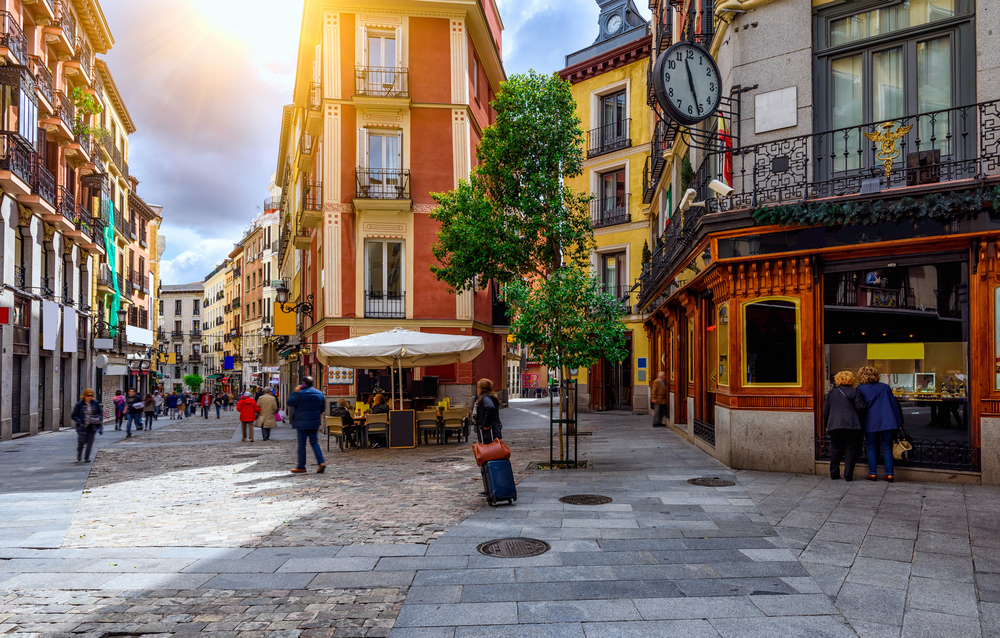
Madrid was once a city plagued by exhaust fumes and the sounds of horns being honked by impatient commuters, but today much of the central part of the city has been converted into a car-free zone. The area is not completely free of vehicles, as low emission and electric vehicles are still allowed in this area (as are motorcycles). This makes Madrid one of the best places for those looking for a car-free life, and it has also significantly improved the air quality in the city center.
Walking in the downtown area is a popular form of transit, especially in the lovely Las Letras neighborhood. Madrid plans to expand its pedestrian-only zones in the years to come, too, so walking will likely become more enjoyable in more parts of the city.
Madrid’s public transport system is also an extremely efficient way to travel throughout the city, and it’s one of the cheapest systems in all of Europe. The metro is also one of the longest networks on the continent, and the Cercanias rail system seamlessly connects the outer suburbs to the city center. There are also thousands of buses throughout the city if the metro doesn’t get you close enough to where you need to go.
9. Melbourne, Australia

Home to one of the best public transportation systems in all of Australia, Melbourne is one of the best cities in the world to live in without a car. The city is large and fairly spread out, but you’ll find a comprehensive system of trains, buses, and trams to get you where you need to go.
The only downside of public transportation in Melbourne is that it can take a while to get from point A to point B, but this is typically only if you are traveling long distances. The city center is especially speedy when it comes to public transportation, though you could also choose to walk this area without much trouble.
For those who are hoping to live outside of the city, as long as you are within walking distance to a train station and grocery store you will have no need to worry about life without a car in Melbourne. There are even train lines to get you out of the city entirely (the V-line), whether you’re hoping to visit a rural town or the Mornington Peninsula.
10. Jersey City, New Jersey, USA
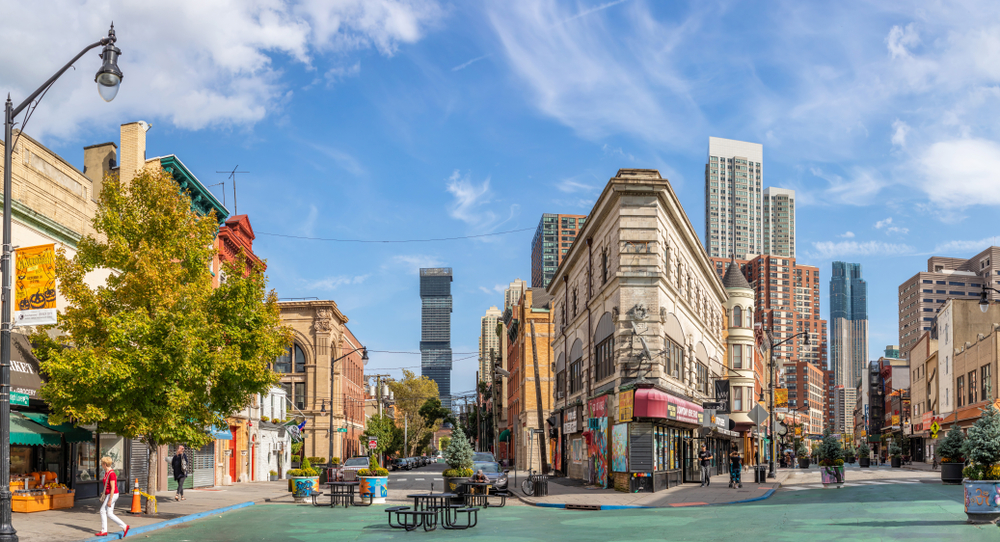
If you want to be near all the action of NYC without actually living in NYC, then Jersey City is one of the best cities in the world to live in without a car. Not only are you just a subway ride away from Manhattan, but there are also tons of public transportation options to get around Jersey City proper.
The Hudson Bergen Light Rail is a popular way to travel in Jersey City, as are the NJ Transit buses. One of the most fun ways to travel around the city is via NY Waterway Ferry, though this is mostly for longer distances.
Those looking for the best way to travel within the city center should stick to their own two feet, with pedestrian-friendly neighborhoods like McGinley Square, Historic Downtown, and Journal Square.
Biking is also growing in popularity thanks to the Citi Bike bike-share system and scenic riverside trails along the Hudson.
11. Brussels, Belgium

Thanks to the extremely old infrastructure and architecture, Belgium’s capital city of Brussels has long since been one of the best cities to live in without a car. Coming in second only to Copenhagen for the most pedestrian-only zones in Europe, Brussels is a great place for those whose favorite mode of transportation is walking.
The pedestrian-only zones are also incredibly beautiful, and you’ll get to enjoy historic sites like the city square, the stock exchange, and the shopping street (Rue Neuve) if you choose to walk your way through the city.
Although the city is extremely walkable, if you prefer public transport, you’ll also have plenty of options in Brussels. The city center boasts a metro, a tram system, buses, and even water buses. If you need to get further out of the city, there is a vast train system to the suburbs and other small towns.
12. Singapore

As one of the most modern cities in the world, Singapore has placed great importance on the infrastructure of their public transportation, making it one of the best cities in the world to live without a car.
The Mass Rapid Transit System, simply referred to as MRT, is usually the fastest way to get around the city and there are numerous stations scattered around Singapore. There is also an extensive bus network around the city, and tickets for this mode of transport are slightly cheaper than those for the MRT.
If you’re looking for a free way to get around the city, you’ll find plenty of well-connected bike paths. While Singapore is too big to explore on foot alone, you should definitely spend some time walking and enjoying the impressive gardens and structures that await you around almost every corner.
Taxis are another good option for transportation in Singapore, especially if you are headed somewhere where the buses and MRT don’t get close to. Understandably though, this is the most expensive mode of transportation in Singapore.
13. Oslo, Norway
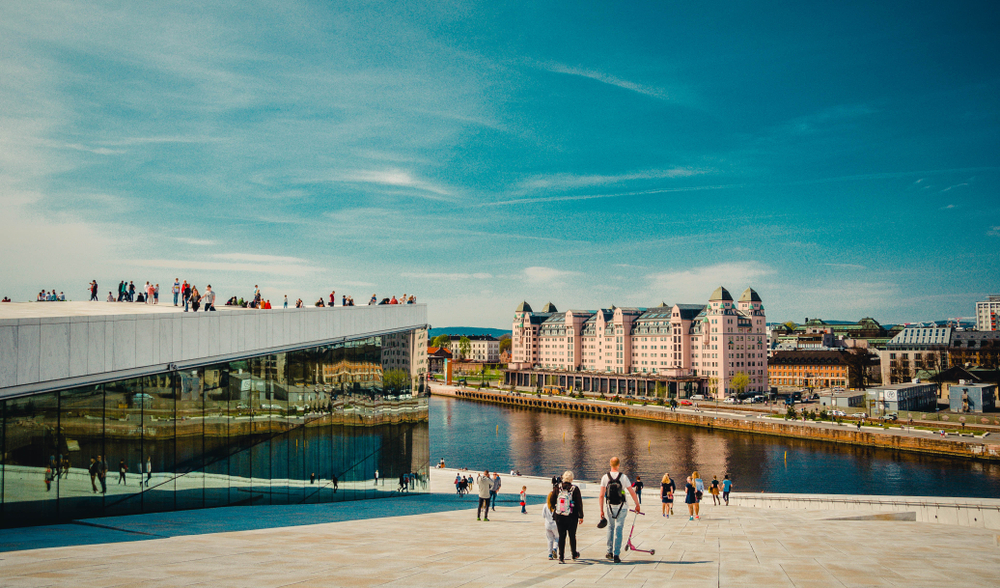
Similar to Madrid, Norway’s capital city of Oslo has already banned all cars from its city center. As you can imagine, this is one of the best cities in the world to live without a car. Oslo is now working on turning over 56 km (about 34 miles) of road in the city center into bike lanes, making cycling the best way to get around the city.
The city center is also extremely walkable, and you’ll be treated to impressive sites both old and new as you wander around Oslo. Residents are also spoiled with a comprehensive public transportation system, with options for taking trams, trains, buses, and the metro around the city. There is even a passenger ferry system to get you to the islands of Oslofjord should you need it.
One of the best things about public transportation in Oslo is that it’s extremely simple. All forms of transportation use the same ticketing system, so all you need to do is go to the station, buy a ticket, and you’ll be good to go no matter which way you choose to travel. You can buy single tickets, 24-hour tickets, weekly tickets, and even yearly tickets depending on how often you travel via public transportation.
14. Portland, Oregon, USA

Portland is another American city that is great for living without a car, and the culture surrounding cars is very progressive. If you live in Portland, you’ve likely seen the city’s naked bike ride, an annual protest where Portlanders bare their bodies in an act of dissent against oil dependency.
There are actually tons of cycling events around the city every year, and every Sunday during the summer there are certain routes blocked off to car traffic to allow bikes and pedestrians to enjoy the city in a new way.
Aside from being one of the most bike-friendly cities in the country, Portland also has a great public transportation system. You’ll find a light rail, streetcars, and buses traversing the city, along with a commuter rail for those who travel from further away. If you do need a car from time to time, all the common transportation apps are available in Portland, including Lyft and Uber.
15. Wellington, New Zealand
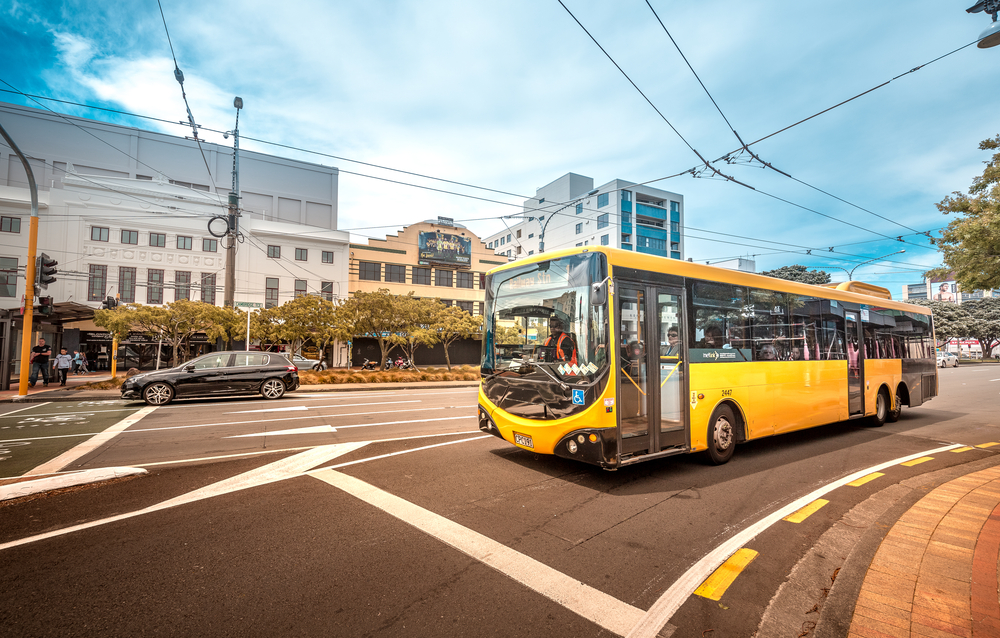
While New Zealand is not particularly famous for its public transportation systems, the city of Wellington stands out among the crowd when it comes to living without a car. For starters, the city is extremely compact, making it easy to trek the main part of the city by foot or by bike, and even some of the nearby suburbs are within walking distance.
That being said, just because the city is walkable doesn’t mean the weather always likes to cooperate. Still, if you don’t mind getting stuck in the rain (or wind for that matter), walking or biking to and from work shouldn’t be an issue. Luckily, Wellington also boasts a good public transportation system (especially for New Zealand standards), with buses, trains, and even ferries servicing the city.
You may spend some time waiting around for public transportation in Wellington, especially late at night, but if you’re in a rush to get home you can always take a taxi.
16. Amsterdam, the Netherlands

Few European capitals can compete with Amsterdam when it comes to bike infrastructure, and this historic city has become famous for the sheer number of cyclists that frequent its streets. Many residents of the Netherlands’ capital city don’t bother owning a car, and if you’re anywhere near the center of the city, it’s usually easier to get around without one.
In 2018, the city restricted motor vehicle traffic on most major roads between the eastern and western parts of central Amsterdam, allowing for pedestrians and cyclists to move between Central Station and Dam Square without having to worry about car traffic (do look both ways for bikes if you are on foot, however).
Amsterdam’s public transportation is also a great way to get around the city if you’re traveling long distances and depending on where you are and where you’re headed, you can hop on a tram, bus, metro, train, or even ferry!
17. Seoul, South Korea
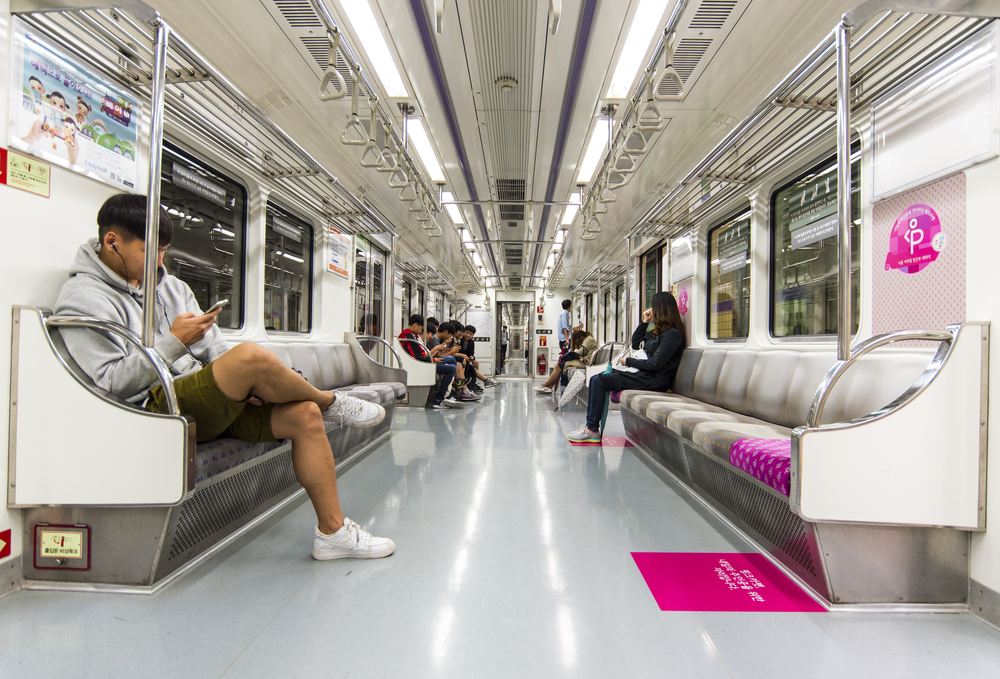
With one of the best metro systems in the entire world, it’s not hard to see why Seoul is one of the best cities to live in without a car. There are nine major metro lines in the city center and outer suburbs, and not only is this form of transportation one of the most convenient ways to travel around Seoul, but the metro is impeccably clean compared to other major systems around the world.
Seoul also has a bus system, with different fleets for traveling within the city center or out to the suburbs, express buses for commuters, and buses going to specific residential areas.
If you want a car for long road trips, you can always rent a car for the weekend – this is quite common for many residents.
18. Buenos Aires, Argentina

Buenos Aires is a sprawling city, and it may seem impossible to live here without a car. But dig a little deeper and you’ll find that this large metropolis is actually one of the best cities in the world to live vehicle-free.
Argentina’s capital city is also the most populous, and many residents rely on public transportation to get to and from work, school, and other locations. There are over 180 bus lines (also known as collectivos) that run throughout the city and even into some nearby suburbs, and these buses are available 24 hours a day, making them extremely accessible.
While the collectivos are a great way to travel around Buenos Aires, the city’s metro, often referred to as the Subte, is the clear favorite amongst locals. It’s affordable, fast, extremely easy to navigate, and there are tons of stations all over the city.
19. Minneapolis, MN, USA

Minneapolis indeed sees its fair share of traffic, but it’s entirely possible to live in Minnesota’s biggest city without a car. It’s actually preferable if you don’t want to waste time in stop-and-go conditions, and in the winter, the icy roads should be avoided at all costs.
Minneapolis makes it easy for residents to walk from place to place even in the coldest of temperatures thanks to its revolutionary skyway system – an 8-mile indoor walkway connecting some of the most important buildings in the center of the city. Even in the summer, walking around Minneapolis is preferable to driving, and some of the most walkable neighborhoods around town include Lynn Lake, Uptown, Lowry Hill East, and Downtown West.
Not only is Minneapolis easily walkable, but it’s also been named the number one city in the United States for bikeability. This is in part thanks to the non-profit organization Move Minneapolis, which advocates for cleaner, faster, and more affordable transportation options for residents. You’ll find plenty of bike lockers, repair stations, and bike borrowing locations around the city.
Minneapolis also boasts a fairly efficient public transportation system, with buses, a light rail, and a commuter rail.
20. Hamburg, Germany
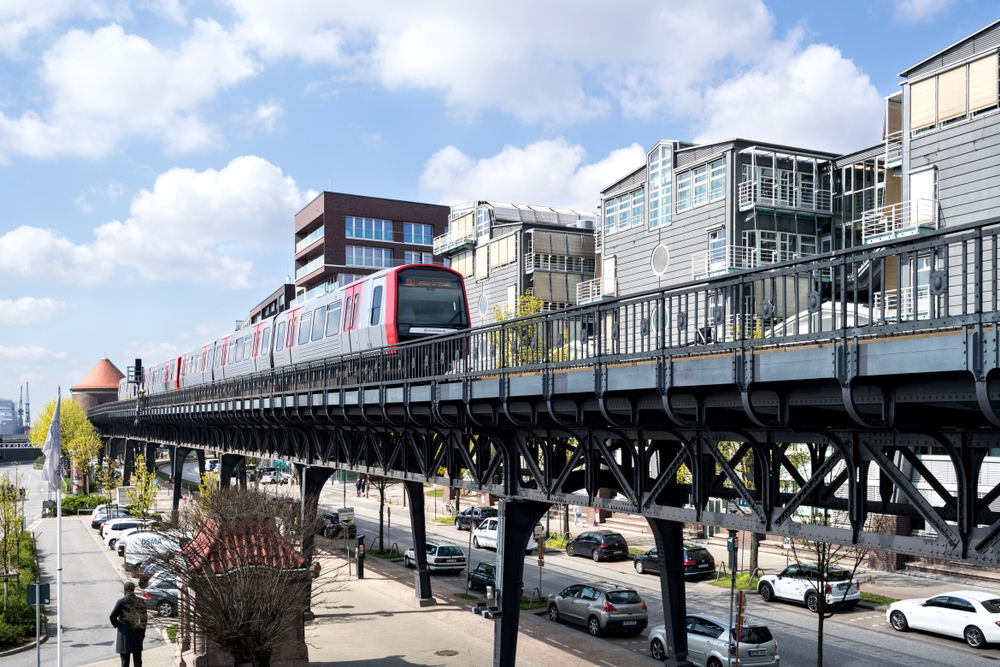
Hamburg is on its way to becoming one of the best cities in the world to live without a car thanks to its “grunes netz”, a project that aims to increase green spaces in the city. Hamburg plans to create pedestrian-only areas around 40% of the city by 2035, and one of the main ways of doing so will be by restricting car access.
If you’re living in Hamburg (or planning to), this means that in the near future you’ll be better off without a car, as there are plenty of other modes of transportation available for you to choose from. The city already has a wide network of pedestrian-only areas and thousands of kilometers of bike paths, so if you like to get your exercise in during your commute you won’t have a problem.
For those traveling long distances or when the weather doesn’t cooperate, the city also boasts an efficient public transportation system. Hamburg is equipped with over 100 bus lines, a subway, a light rail, commuter trains, ferries, and even carpool services and taxis should you find yourself really needing access to a car.
21. Boston, Massachusetts, USA
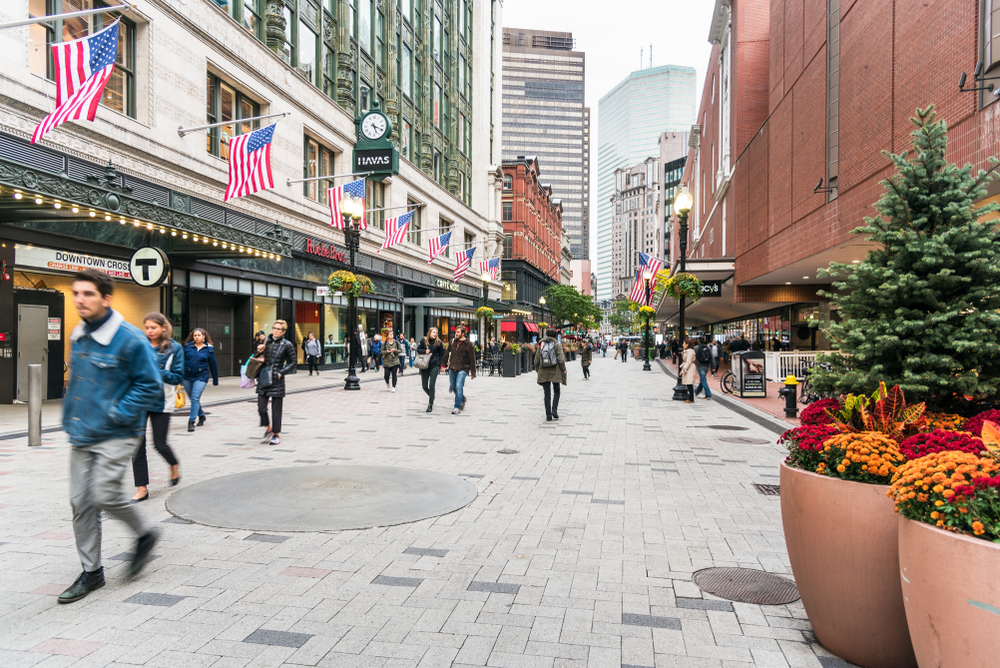
Often referred to as “the walking city”, it should come as no surprise that Boston is one of the best cities in the world to live without a car. It comes in at number four for most walkable cities in the US, and not only is this a great way to get around, but thanks to advocates for city walking, you’ll likely learn something new during your stroll thanks to all the resources available to pedestrians.
The most famous walking trail in Boston is the Freedom Trail, and this self-guided walking tour will take you past 16 national historic sites. Other walkable areas in Boston include Bay Village, Beacon Hill, and North End.
Biking is also growing in popularity, and there are numerous trails and paths located throughout the city. If you don’t own your own bike, you can use the bike share program powered by Bluebikes.
Boston’s public transportation also makes it easy to get around without a car, and the “T” (formally known as the Massachusetts Bay Transportation Authority) includes a subway line, buses, trolley cars, and even boat services.
22. Barcelona, Spain
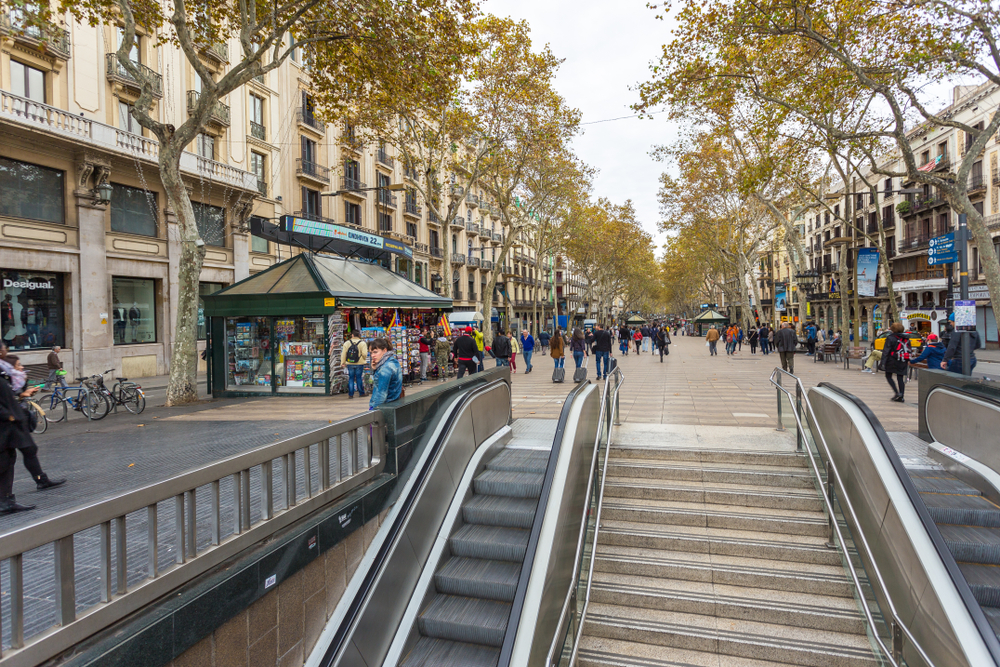
Barcelona is another old city that was really never meant for cars, making it easy to live here without owning a vehicle. While modern infrastructure allows for cars to make their way in and around Barcelona, the city is currently trying to take most old models off the road in an effort to curb carbon emissions. This ban on older models is good for residents, too – if you trade in a vehicle built before 1997, the city will actually give you a free, three-year pass for public transportation.
This pass is nothing to scoff at. The public transportation in Barcelona is great, and the metro system is one of the most popular ways to get from place to place. The system is extremely modern and easy to use, with numerous stations around the city. There is also a bus fleet, trams, and commuter trains for the larger Catalan area.
23. Shanghai, China

With one of the fastest-growing metro systems in the world, Shanghai is a great place to settle down without a car. The first metro line opened in 1993, and, at the time of writing, the city now has 18 lines.
This is just one way to get around Shanghai, however. The city also boasts over 1,000 bus lines (including the world’s oldest continually operating trolley bus system), trams, and a rail line that includes a high-speed railway to Beijing.
Although Shanghai is one of the most expensive cities in China, public transportation is shockingly cheap and easy to use. You can use the same transportation card for all forms of travel, so there’s no need to fuss with multiple tickets when you are going long distances or switching between modes of transport throughout the day.
24. Milan, Italy

What was once one of the most congested metropolitan areas in Europe is now one of the best cities in the world to live without a car. Milan has taken strides to reduce car traffic in and around the city center, and it’s entirely possible to get around without a vehicle at all.
Milan boasts four different types of public transportation: buses, a metro, trams, and BikeMi, a bike-sharing system. Not only are all four options convenient and easy to use, but they’re also quite affordable. Residents of Milan can purchase weekly, monthly, or annual travel cards, and there are discounts for people under the age of 26 and seniors over the age of 65.
25. Paris, France

Paris is in the process of banning both diesel and traditional gasoline vehicles in the city by 2030, making it one of the best cities in the world to live without a car. If you’re already living in Paris and are considering ditching your car, the government already has a program in place to buy older models in exchange for 700 Euros to be used towards buying a bike, a public transport card, or a ride-sharing service.
Paris’s public transportation systems are some of the best in Europe, with a metro, a bus fleet, tramways, regional trains, and express railways all servicing the city and surrounding area.
The city has also been busy redesigning central areas in the city to make them more bike and pedestrian-friendly, and there are even certain dates when cars are banned completely from certain routes so that foot and bike traffic can roam freely.
26. Washington D.C., USA

When it comes to walkable cities in the United States, Washington D.C. is another top contender. There’s really no need for a car if you live in the country’s capital city, as there are endless walkable areas, most of which are littered with nationally recognized attractions. Some of the most walkable neighborhoods in D.C. include Mount Vernon Square, U-Street, and Dupont Circle.
Biking is also a common mode of transport in D.C., and the city boasts numerous bike lanes and paths that cross through verdant parks and other areas of interest. If you haven’t invested in your own set of two wheels, there are numerous dockless bikes and electric scooters located around the city.
If you prefer public transportation to walking or biking, you’re in luck. Washington D.C. has a few different options for getting from point A to point B, including rail lines and buses that move throughout the city and into the nearby suburbs.
27. Vancouver, Canada
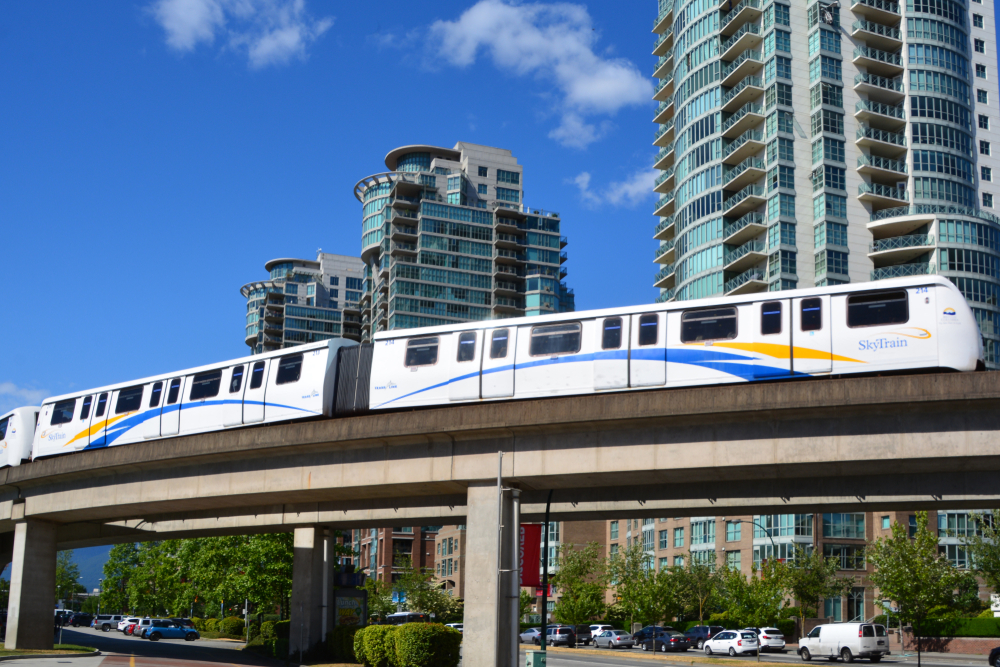
Canadians looking for one of the best cities in the world to live without a car won’t have to go far. The city of Vancouver is a great place to live without a vehicle and owning your own four wheels will cost you a pretty penny in this metropolitan area anyway.
The public transportation system in Vancouver is both convenient and efficient, with buses, ferries, and a light rail all servicing the city. The only downfall to the public transport options in Vancouver is that they are really only quick and convenient if you are inside of the city center. If you are commuting from a nearby suburb, travel times are longer with less frequent fares available.
The central part of the city is also easy to navigate on foot or by bicycle, with plenty of paths weaving their way around the city. This mode of transportation is understandably less popular when the snowy winter months roll around, but it is a good way to get around during the warmer parts of the year.
28. Ghent, Belgium
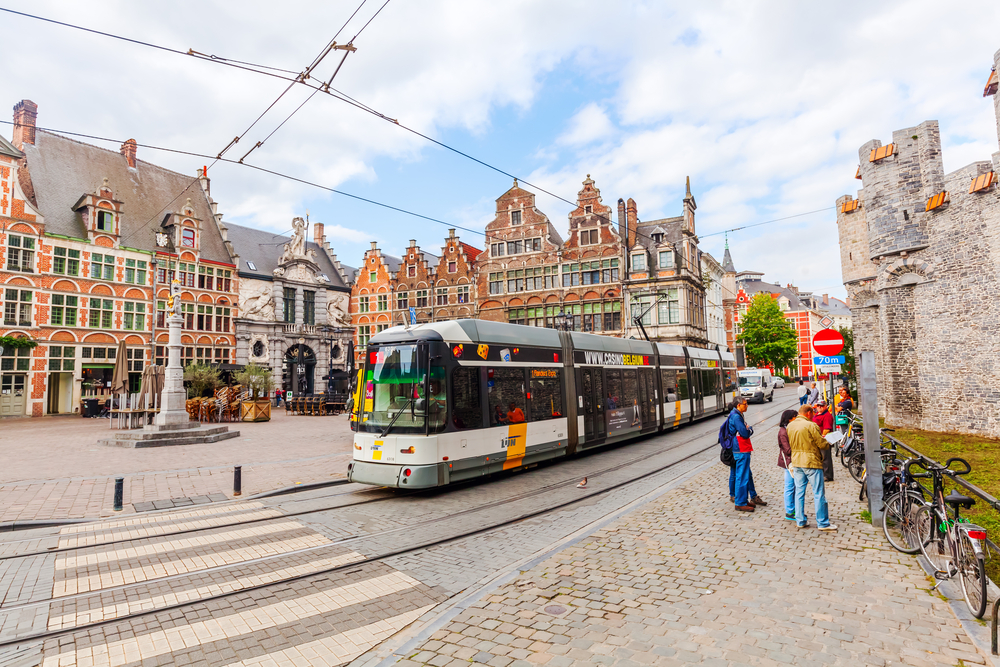
In Ghent, cyclists and pedestrians are king and cars are a thing of the past. This small Belgian city did away with vehicles in the city center, and ever since, the streets have come alive with foot traffic. Ghent is an ancient city that was never really built for lots of vehicle traffic in the first place.
Not only is there more room for greener forms of transport now, but the air quality has also improved and residents report feeling safer as they walk and bike around the center.
Ghent also has extremely efficient public transportation systems, including buses and trams. There are dozens of stops all around the city, and even if these modes of transport don’t get you exactly where you need to go, you shouldn’t have to walk far to complete your journey.
29. Medellin, Colombia

Often referred to as the “city of eternal spring”, Medellin is famous for more than just its impeccable climate. This is one of the most modern cities in South America and has the infrastructure to prove it.
Even if you don’t own a car, you can easily navigate this magical city thanks to the modern metro line, the metro cable, and the bus fleet. These forms of transportation will get you anywhere you need to go, from the center of the city to out into the suburbs beyond.
If you’re in the city center, walking and biking are also viable options, and every Sunday the streets close to cars and other vehicles to allow pedestrians and cyclists to travel around the main parts of the city freely and safely.
30. Munich, Germany

Last but not least on our list of the 30 best cities in the world to live without a car is Munich. Germany as a whole has wonderful public transportation options, and the southern city of Munich is no exception.
Residents are spoiled with numerous public transportation options, including a network of underground trains (the U-Bahn), suburban trains (the S-Bahn), trams, and buses. One of the best things about not owning a car in Munich is that the public transportation systems can get you virtually anywhere you want to go, whether that be the city center, a distant suburb, or even out into the countryside for a hike.

